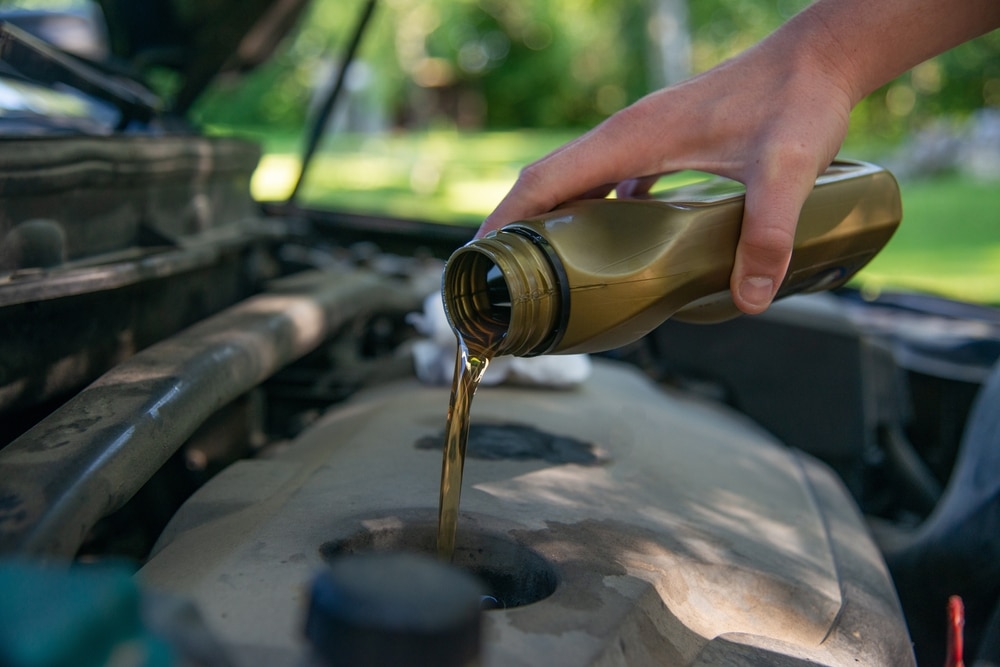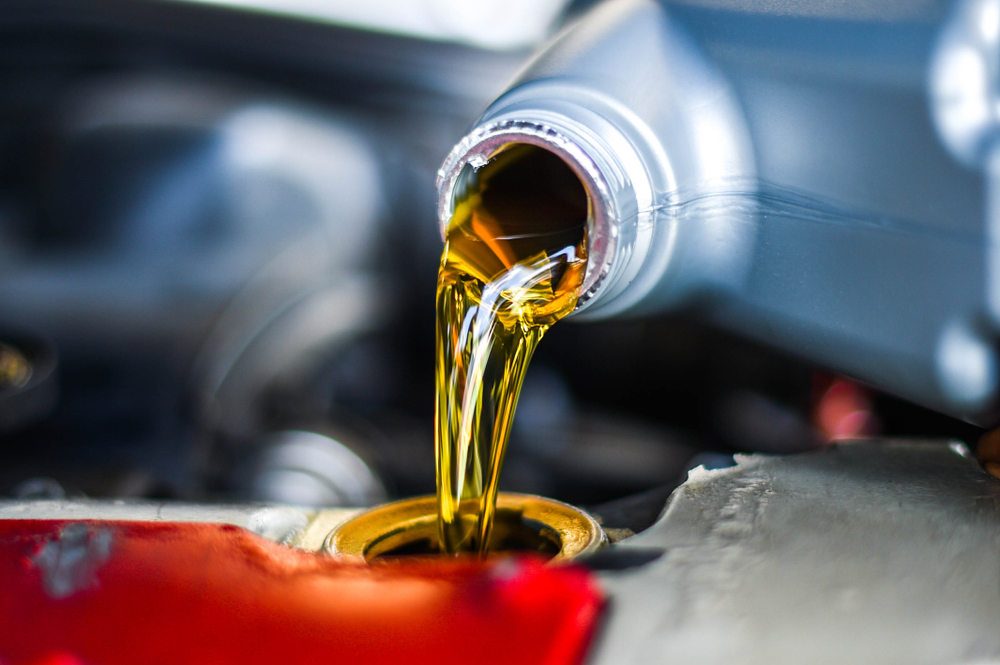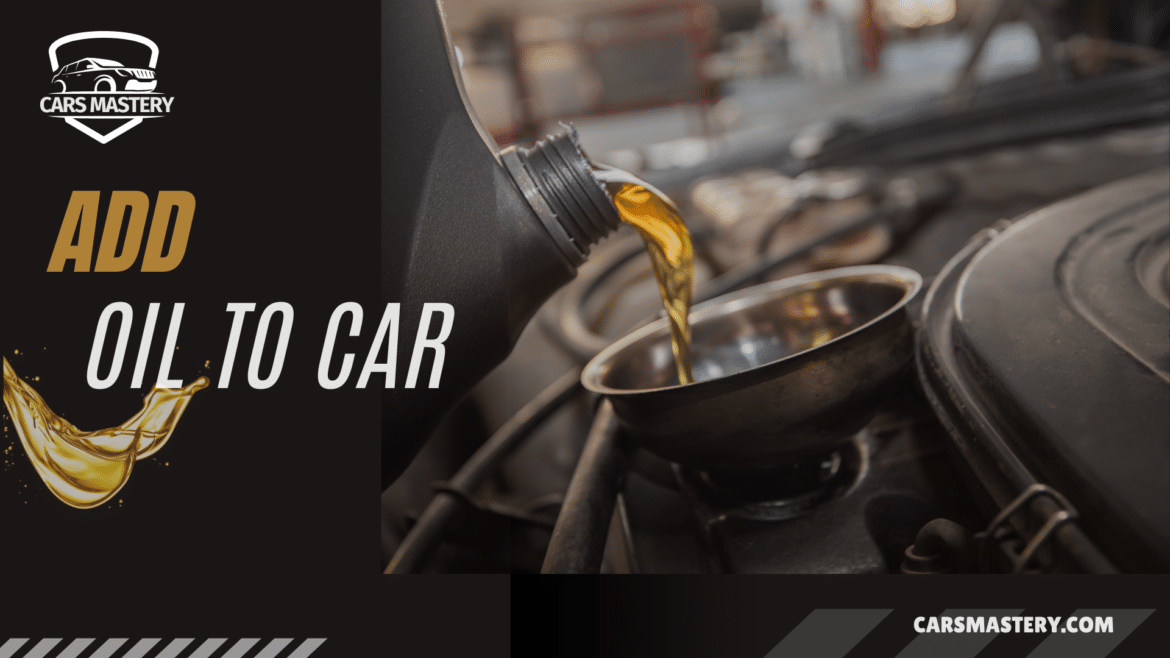Table of Contents
Do you want to cruise all around the city and rev that powerful engine of your car? Engine Well, that could be possible in only one way. This one way is when your engine oil is full. But, first things first, have you ever wondered how to add oil to a car? How exactly do you measure that oil filler cap, and where do you put it in your car? Don’t worry; we won’t leave any of these questions unanswered. When it comes to your car, maintaining it properly should be the number one priority. Whether you’re keeping in check why your car is leaking and what reason it is happening or just keeping your car up to date, it is always important. If you want to know how to add oil to the AC compressor or the empty engine, we are here to guide you. Let us restart our cars and rev our engines for cruising.
Filling up Your Car Tank
When you’re a beginner driver and you buy your first car, you always have this in mind to take good care of it. And understanding how to add oil is one of these things. The first step in adding oil to your car is to find the oil filler cap, typically located on top of the engine and appropriately labeled. Using the dipstick or dashboard indicator, you should check the oil level after removing and cleaning the cap to keep dirt out of the engine. If the oil level is low, use a funnel to prevent spillage when adding the specified motor oil filter. It’s crucial to keep in mind that overfilling can harm engines. To stop leaks, firmly reinstall the oil filler cap after adding oil. It’s critical to realize that adding oil is a maintenance procedure and should be used outside of routine oil changes. Now, let us learn the steps to add up oil to our vehicle.

How to Add Oil to Your Car: A Step-by-Step Guide
Now, the first steps to add oil to your car are always first. Let’s look at how you can look at the oil check inside your car.
Checking Oil
To add oil into your car, you need to check the oil level first.
- Give It Time to Rest: Give the automobile five minutes to rest before checking the oil. This will let the oil settle and guarantee an accurate reading.
- Level Surface: To avoid skewed readings, park the vehicle on a level surface.
- Warm-up: As advised by most manufacturers, start the car in its current location for three to five minutes before checking. For detailed instructions, consult the owner’s handbook.
- Get to the Hood: Grab the hood release lever, often found next to the driver’s seat. Find and push the little lever beneath the Hood to fully release it.
- Locate the Dipstick: Search for a tiny tube that is generally yellow-capped and says Engine Oil. The dipstick is a long, metallic object situated close to the front of the car and has a colorful handle.
- Wipe off the Dipstick: Take out the dipstick and use a dry cloth to clean off any oil splatters. Take note of the markers, typically dots, lines, or crosshatched squares, that show the oil levels.
- Examine the Oil Level: Before you top off the engine oil, check the oil level by returning the dipstick and taking it out again. Ensure the oil level is closer to the top mark and the oil is between the markers.

Adding Oil to Car
After you’ve done checking oil, the next step is to add oil to your car’s engine.
- Consult Your Owner’s Handbook: Find out what kind and volume of oil your automobile needs.
- Assemble Materials: Ensure you have a funnel for convenient pouring and the correct oil.
- Slide the Hood Open: Inside the vehicle, next to the driver’s seat, is a lever that releases the hood. Locate the hood release lever, often in the center of the Hood, by moving it to the front of the vehicle. Press the lever inward to open the Hood and reveal the engine entirely.
- Remove Cap: Open the oil filler cap.
- Add Oil: Use the funnel to pour in oil gradually, checking the dipstick frequently.
- Recheck Level: Ensure oil is between “min” and “max” marks.
- Replace Cap: Securely close the oil filler cap and clean up any spills.
Prevent Overfilling
Check the oil level periodically and add oil gradually to avoid overfilling and causing engine problems. Also, be aware how much oil your car generally takes.
Frequent Maintenance
Regularly changing the oil per manufacturer guidelines is essential; adding oil is only temporary.
- It’s simple to add oil to your car, which can help keep the engine running smoothly and shield it from harm.
- By following these instructions and being careful, you can maintain your vehicle in good operating order for miles.
- Also, make sure to get it inspected quite often.

Choosing the Right Engine Oil
Selecting the proper engine oil is essential to preserving your vehicle’s longevity and performance. It depends on where the oil settles when it goes into your car. This thorough guide will assist you in successfully navigating the world of engine oils.
- Adhere to the Suggested Oil: Always use the oil type your owner’s manual recommends. Violating this advice may result in warranty voiding and engine problems.
- Comprehending Viscosity: Viscosity signifies the oil’s ease of flow. Usually, the viscosity rating is shown as a pair of numerals, such as 10W-30. The first number (with the ‘W’) in Hong Kong English indicates performance in cold weather, and the second indicates performance in hot weather. Make sure that the first figure corresponds to your climate.
- Certifications Are Important: Look for certifications, such as API and ILSAC’s suggested practices. This guarantees that the oil satisfies industry requirements and is suitable for your vehicle’s engine.
- High-End Vehicles and Severe Driving Conditions: Synthetic oils provide exceptional performance and are perfect for high-end vehicles or severe driving circumstances. Even if they are more costly, the advantages frequently exceed the drawbacks.
- Oil Blending: Combining synthetic and conventional oils is permissible to achieve cost-effective solutions without compromising performance.

Final Thoughts
Coming to an end, we’d say it’s crucial to begin with a fast oil check before getting into the specifics of adding oil to your car after you remove the oil. Now that the necessity has been established move on with assurance. The first stages are selecting the appropriate engine oil, finding the oil fill cap, and removing it. To ensure the surface is clear enough to add oil, wipe it clean. To check the oil level, locate the oil dipstick, refer to your owner’s manual, and search for oils in your Oxford English dictionary for guidance. It’s time to add the oil now. Ensure not to overfill when carefully pouring it into the correct fill oil cap; precisely topping off your oil guarantees peak engine performance.
In conclusion, remember that performing this regular maintenance not only extends the life of your engine but also guarantees a more comfortable ride. Thus, as the saying says in Chinese, add oil to keep your car functioning smoothly for many kilometers.
OIL UP AND REV THAT ENGINE!

